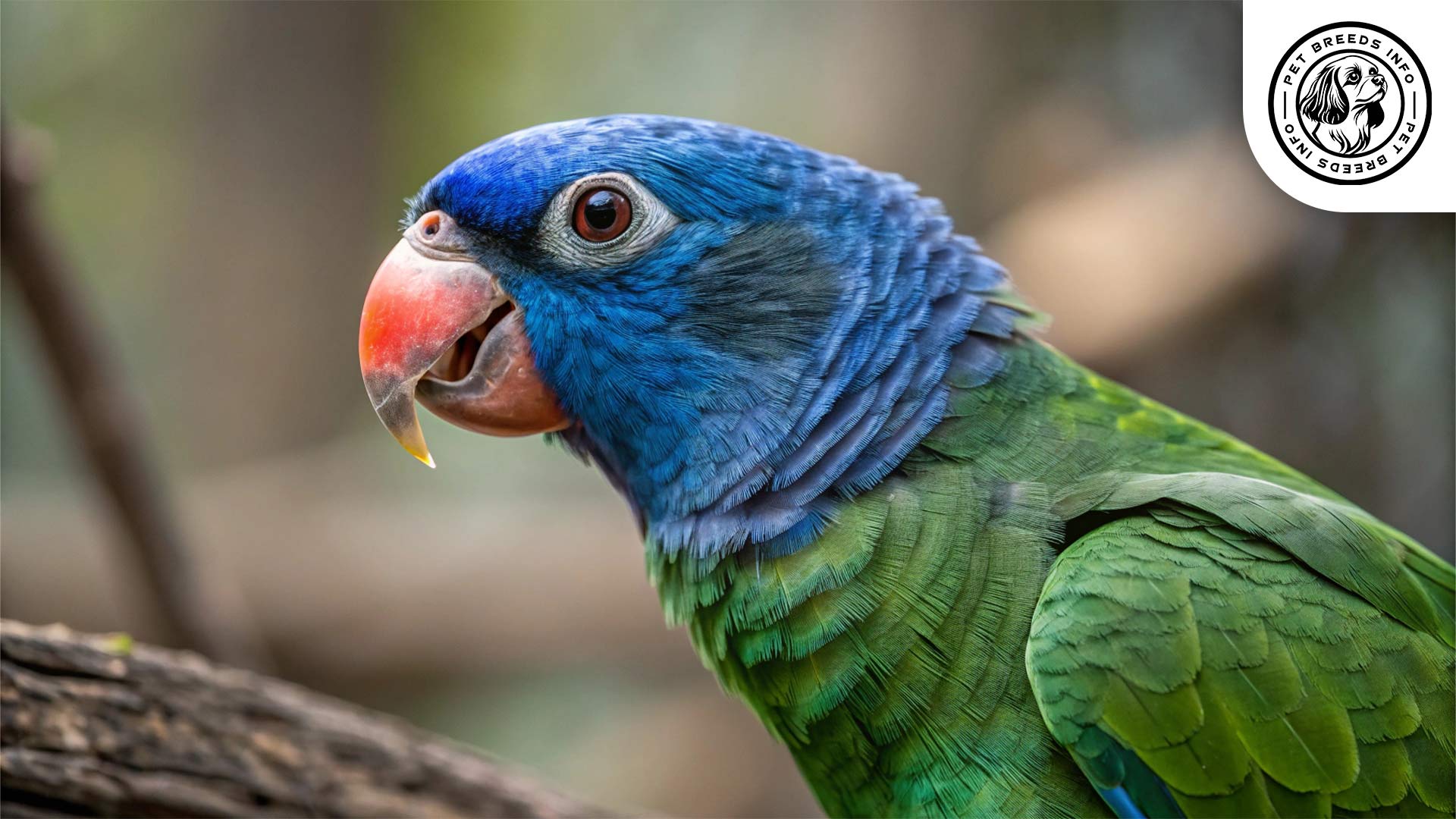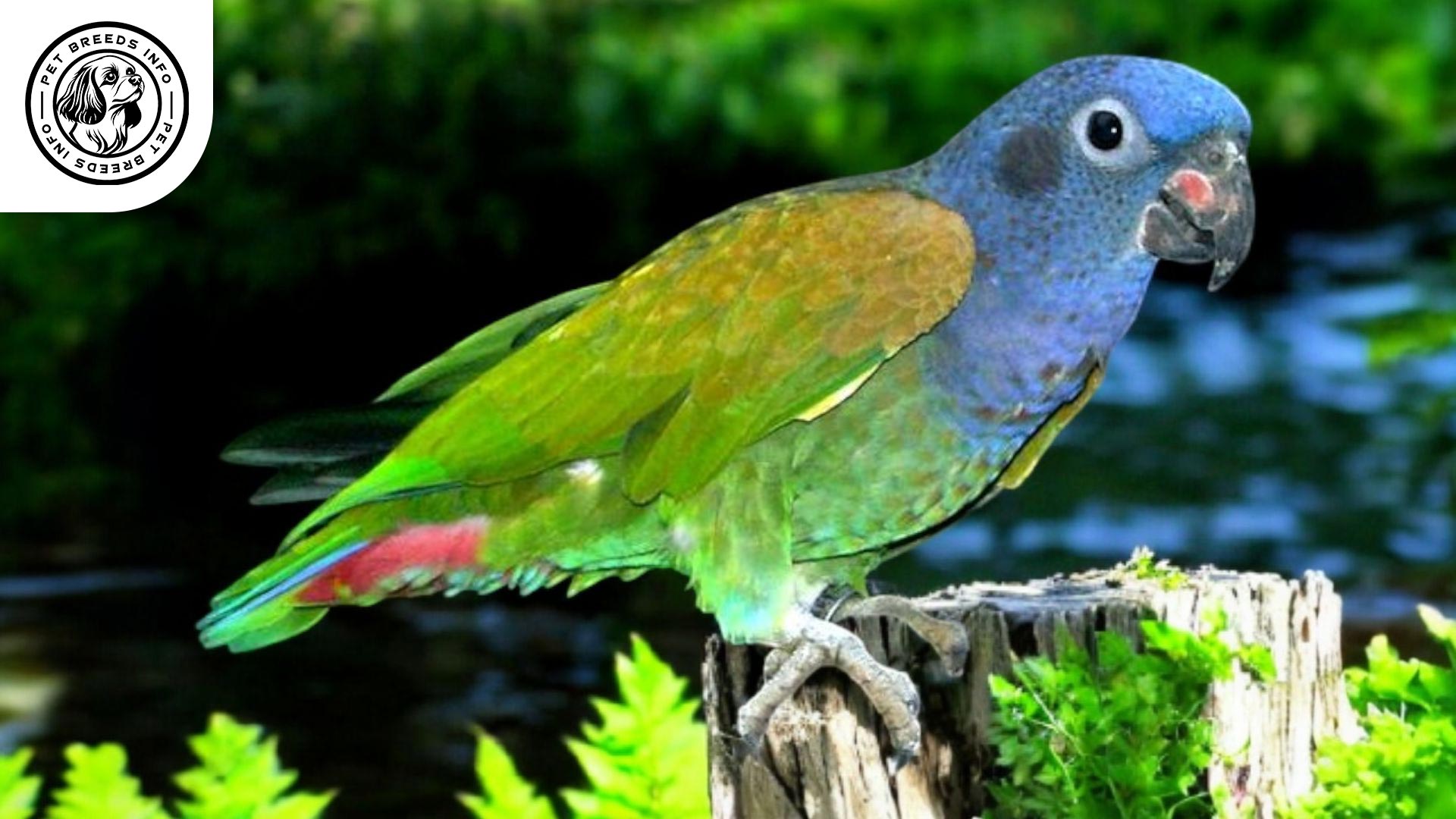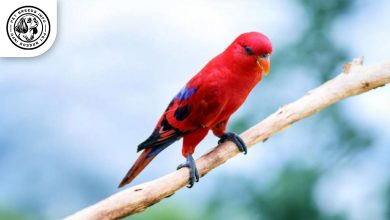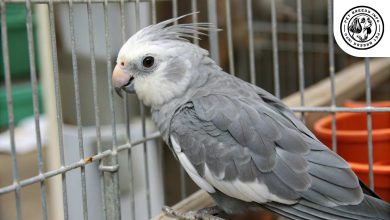Blue-headed Pionus Bird: Personality, Lifespan, Food & Care
General Introduction of the Breed
The Blue-headed Pionus (Pionus menstruus) is a medium-sized parrot known for its striking blue head and green body. It is also known as the “Blue-headed Parrot” and belongs to the Pionus genus. This parrot originates from Central and South America, including countries like Venezuela, Colombia, Brazil, and Peru.
Historically, the Blue-headed Pionus has been popular among bird enthusiasts due to its gentle nature and moderate noise level, making it an excellent pet choice for households looking for a quieter parrot.
Table of Contents
| Common Name | Blue-headed Pionus |
| Scientific Name | Pionus menstruus |
| Origin | Central and South America (Venezuela, Colombia, Brazil, Peru) |
| Size | 11 inches (28 cm), medium-sized |
| Lifespan | 25–35 years |
| Colors | Blue head, green body, red under tail, black beak with reddish-orange base |
| Talking Ability | Moderate – can learn a few words and phrases |
| Noise Level | Low – quiet compared to other parrots |
| Social Behavior | Affectionate, calm, independent, bonds well with owners |
Physical Characteristics
The Blue-headed Pionus typically measures around 11 inches (28 cm) in length and weighs between 7-9 ounces (200-250 grams). Males and females have similar physical appearances, making it difficult to distinguish between genders without DNA testing.
This parrot has a striking appearance, with a deep blue head contrasting against its green body. Its eyes are dark brown, set in a pale featherless ring. The beak is mostly black with a reddish-orange base on the upper mandible, and the feet are zygodactyl (two toes pointing forward and two pointing backward), aiding in strong grip.
Its tail is medium-length with hints of red underfeathers, which are a distinct trait among Pionus parrots.

Personality and Temperament
The Blue-headed Pionus is a calm, affectionate, and intelligent bird. While they are not as talkative as some other parrot species like African Greys or Amazons, they can learn a few words and phrases. Their vocalizations are soft and less noisy compared to other parrots, making them an excellent choice for indoor living.
They form strong bonds with their owners and enjoy social interaction but are more independent than other parrot species. While they can be playful and curious, they are less demanding and prone to tantrums than some high-energy parrots.
This breed adapts well to various environments, although sudden changes or neglect can lead to stress-related behaviors.
Care and Maintenance Requirements
Blue-headed Pionus parrots require daily activity and room to climb, fly, and explore. A spacious cage with perches, toys, and ladders is essential.
They are semi-independent but still enjoy spending time with their owners. Daily socialization and interactive play are recommended to keep them mentally stimulated.
Grooming maintenance is relatively low compared to other parrot species. A balanced diet, occasional bathing or misting, and nail trimming ensure good hygiene.
They are adaptable but should be protected from extreme temperatures. Drafts, excessive heat, or humidity can cause discomfort.
Diet and Nutrition
A healthy diet for a Blue-headed Pionus consists of high-quality pellets, fresh vegetables, and fruits. Leafy greens, carrots, apples, and berries are excellent choices.
Avoid feeding them avocados, chocolate, caffeine, salted foods, and artificial additives, as these can be toxic.
Read More: Hoffmann’s Conure Bird
Seeds and nuts should be given in moderation to prevent obesity. Fresh water should always be available.

Health and Common Medical Issues
Some common health concerns include respiratory infections, Aspergillosis (a fungal infection), Vitamin A deficiency, and obesity. Regular check-ups with an avian veterinarian are important for early diagnosis and treatment.
With proper care and diet, Blue-headed Pionus parrots have a lifespan of 25-35 years, making them a long-term commitment for potential owners.
Regular vaccinations, parasite control, and a clean living environment help maintain their overall health.
Training and Behavior Management
Blue-headed Pionus parrots are relatively easy to train due to their intelligence and willingness to bond with their owners.
Positive reinforcement techniques, such as treats and praise, work best when training them to perform tricks, step up, or interact with humans.
Read More: Blue-crowned Conure Bird
Early socialization is important to prevent shyness or fearfulness. Consistent handling and exposure to various environments help build confidence.
They are generally well-behaved and do not exhibit excessive screaming or aggression when properly trained and cared for.
Interaction with Other Animals and Humans
The Blue-headed Pionus is affectionate but not overly clingy. They enjoy attention but also appreciate quiet time on their own.
They get along well with children, provided the child understands how to handle and respect them. Supervision is recommended when introducing them to other pets.
These parrots can coexist with other birds, but interactions should be monitored, as territorial behavior can occur.

Price and Availability
The cost of a Blue-headed Pionus varies between $600 to $1,500, depending on age, breeder reputation, and location.
It is important to purchase from reputable breeders or adopt from rescue centers to ensure a healthy and well-socialized bird.
Potential buyers should check for signs of illnesses before purchasing and ask about the bird’s background, diet, and socialization history.
Conclusion and Final Thoughts
The Blue-headed Pionus is a fantastic choice for bird owners seeking a quiet, affectionate, and moderately active companion.
They are well-suited to apartment living due to their softer vocalizations and independent nature but still require social interaction and mental stimulation.
Before adopting, potential owners should ensure they can provide a long-term commitment, a proper diet, a spacious cage, and regular health check-ups.
Read More: Blue-fronted Amazon Bird
With the right care, training, and attention, the Blue-headed Pionus makes a loving and low-maintenance pet that can bring years of joy to any household.
FAQ
Is the Blue-headed Pionus suitable for apartments?
Yes, it’s a quieter parrot breed, making it ideal for apartment living.
Can Blue-headed Pionus parrots talk?
They can mimic a few words or phrases but are not known for strong talking ability.
How long do they live?
With proper care, they live 25 to 35 years.
Are they good with kids and other pets?
Yes, they are gentle and can be good with children and other pets if supervised properly.





